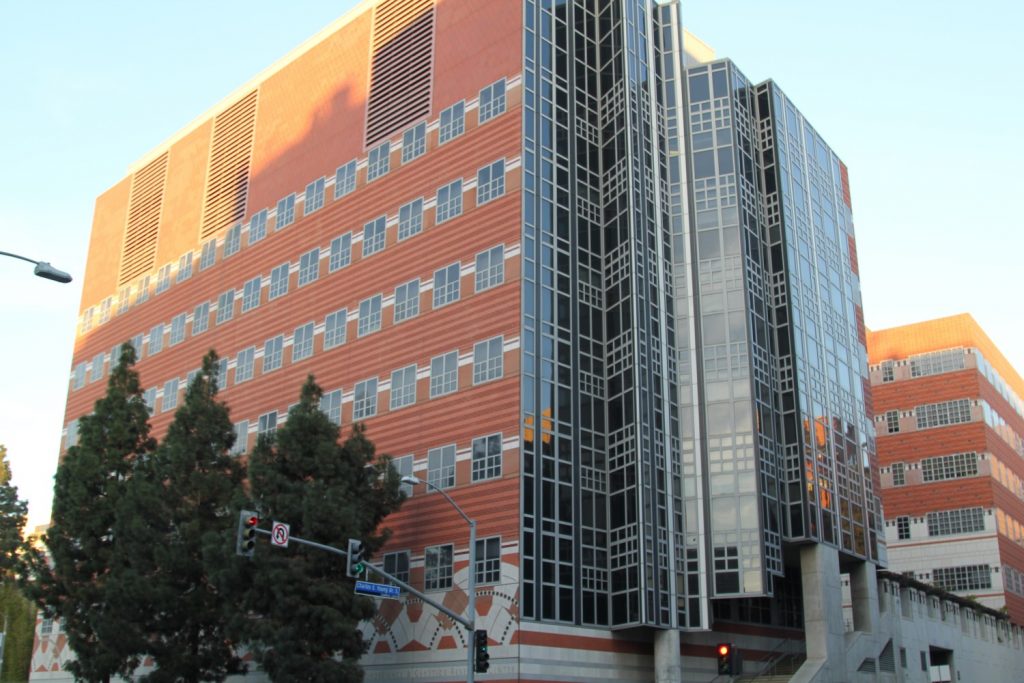The UCLA Brain Research Institute (BRI) was founded in 1959 by Drs. John French, Horace “Tid” Magoun, Donald Lindsley and Charles Sawyer with the purpose of creating a central body responsible for promoting neuroscience as a distinctive, inherently interdisciplinary research endeavor. The first space dedicated to the BRI, a wing of the new Center for Health Studies, would not officially open its doors until October 1961.
UCLA had already emerged as a national leader in neuroscience research during the 1950s. Institute co-founder Magoun came to UCLA to head the Department of Anatomy (now Neurobiology). His organizational efforts and research partnerships with other departments attracted prominent new faculty such as Arnold Scheibel and Carmine Clemente who would become central figures in BRI leadership in decades to come. These core faculty were instrumental in attracting a rapidly growing interdisciplinary group of neuroscientists, students and an increasing number of visiting scientists from all over the world.
The first building dedicated to the BRI brought down physical barriers to interdisciplinary collaborations by placing the departments of anatomy, biophysics and nuclear medicine, infectious diseases, neurology, neurosurgery, pathology, pediatrics, pharmacology, physiology chemistry, physiology, psychiatry, psychology and zoology together. At the time, the L-shaped structure formed a bridge between the medical school and the Neuropsychiatric Institute. To this day, the Brain Research Institute remains an intellectual bridge between UCLA basic sciences and the clinical work in the College and the David Geffen School of Medicine.
In 1961, the BRI had 67 members. Thirty years later, with 162 members it became clear that the BRI had outgrown its original space. Thanks to an unprecedented gift from the Goldschmied family, the Gonda (Goldschmied) Neuroscience and Genetics Research Center was constructed and in 1998 became the new home of the BRI and UCLA’s Department of Human Genetics.
At present, the Brain Research Institute has almost 300 members. In 2016 these faculty published over 1000 research papers in a wide-ranging series of eminent journals. Its educational mission also continues to grow, and currently encompasses over 250 postdoctoral students populating faculty labs, 80 doctoral students, and over 700 undergraduate neuroscience majors.
BRI continues to be a magnet for some of the best neuroscience researchers in the world. It remains a powerful incubator of basic and medical science research endeavors leading to a deeper understanding of the human brain and clinical strategies that will become viable treatments for diseases and disorders such as Genetics of Mental Disorders, Parkinson’s, Alzheimer’s, autism, schizophrenia and addiction.





